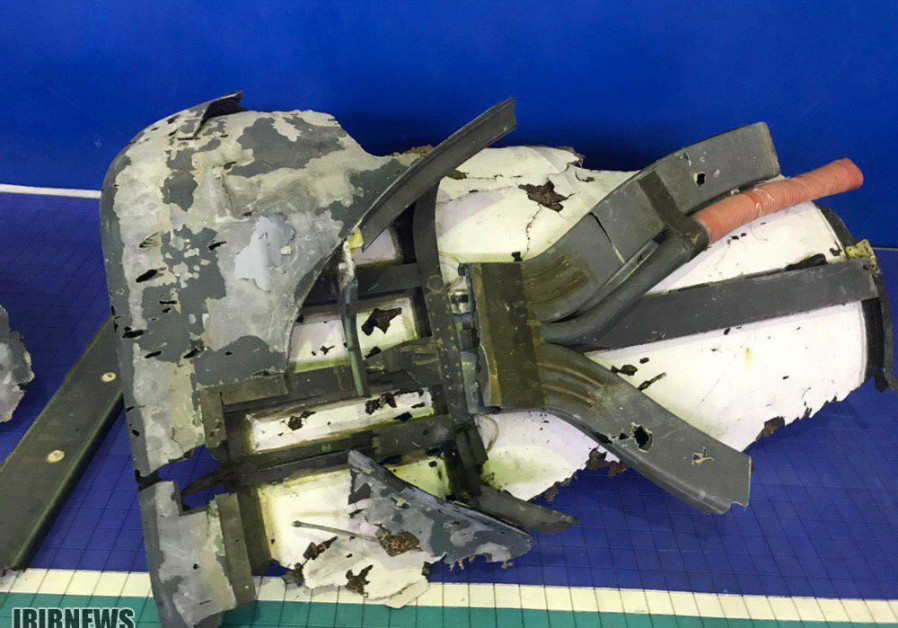Iranian Ayatollah Movahedi-Kermani says Iran doesn’t need nuclear weapons but threatens to strike at Israel.
Seth J. Frantzman

Two weeks can seem like a year in international relations when countries are about to go to war. That is what the last fortnight has been like after Iran downed a US Global Hawk drone over the Gulf of Oman and US President Donald Trump called off airstrikes minutes before they happened. That was on June 20. Since then, even though the Middle East still rests on a taught wire of tensions, Iran’s rhetoric has decreased and the US has seemed to move on from its tough talk.
The G20 in Osaka helped to reduce threats of war partly by distracting world leaders. Iran is now angry over the UK after an audacious takeover of an oil tanker by British Royal Marines in Gibraltar. The tanker, a Panamanian-flagged ship named the Grace 1, was grabbed by the British after the elite soldiers roped landed from a helicopter in “pitch darkness,” according to The Independent. The ship is alleged to be carrying oil to Syria. Iranian commentators have now threatened to seize a British ship.
Iran is now playing its typical “good cop, bad cop” routine with the regime threatening to exceed uranium enrichment stockpile levels as spelled out in the 2015 Joint Comprehensive Plan of Action or Iran Deal, while the foreign ministry in Tehran says it wants to save the same deal. Iran’s foreign minister even got a glowing profile about his hardships at home and abroad in The New York Times. Iranian President Hassan Rouhani warned that Iran would enrich to any level it wants on Thursday. Meanwhile Iran’s Press TV says that Trump has distorted Rouhani’s comments as Iran seeking a “new deal,” which is the US administration’s official desired outcome from the sanctions Washington has put in place.
A careful reading of Iran’s statements and the actions of its proxies show that it has sought to reduce tension since June 20 when it shot down the drone. Although Iran continues some of the same rhetoric slamming Washington it is clearly angling for closer support from Russia and also looking forward to a Russia-Turkey-Iran summit in August.
Iran’s Houthi rebel allies have kept up their daily drone strikes on Saudi Arabia. This shows that Iran feels that the Saudi intervention in Yemen is the weakest link of US allies in the region. Rumors that the United Arab Emirates, a key ally of Riyadh and Washington, may reduce its role in Yemen, may have emboldened Iran. Iran also wants to see how the Houthi drones, which are copies of Iranian drones, function against sophisticated US air defense technology which Saudi has.
Iran’s real goal in this part of the Yemen conflict is not really to defeat Saudi, but rather embarrass Riyadh with a view to using its drones and technology against Israel. Press TV ran an article on Friday claiming Israel has held four Iranian diplomats for the past 37 years. In Iraq the Iranian policy is careful pushing of its influence without trying to set off a conflict with the US there. In mid-June numerous rocket attacks near US forces in Iraq showed that Iran’s proxies can strike with precision. The rockets were a message. But after June 20 they stopped. This was clearly an indication that Iran sought to provoke the US from June 13, when oil tankers were attacked in the Gulf of Oman, and June 20 when the drone was shot down. Iran even said it could have downed another US aircraft. But it saw how close the US came to airstrikes and Tehran doesn’t want an actual conflict.
Now Tehran is focused on other goals, which are linked to its overall goals to influence the Middle East without creating a major conflict. Ayatollah Ali Movahedi-Kermani, in a Friday sermon indicated that Iran was not seeking a nuclear bomb but he said that if Iran wanted to strike Israel it could. According to Iran’s ISNA news he said that Iran could strike Israel’s nuclear reactor. His comments, said to the faithful in Iran, appeared more for internal consumption than for external propaganda.
Iran is also looking at developments in Syria. It’s policymakers can read the Israeli press, such as Ynet’s claim that Israel has a “free rein in Syrian skies to go after Iran.” It can see the satellite images of damage from a July 1 airstrike of a hanger at Jarmaya near Damascus. Tehran may take some heart from the Russian Foreign Ministry demand that “Israel’s practice of spontaneous strikes on Syria must be brought to an end.” But Tehran itself is more silent on the strikes and the apparent embarrassment to its ally and its own forces on the ground. It is only three months since an Iranian 3rd Khordad system was allegedly destroyed in T-4 airbase in Syria. Iran looks at the Gulf of Oman, Syria and Iraq as one large arc of potential conflict. But for now it has climbed down a bit from its rhetoric and is focusing on other goals, such as pressuring European countries to stay with the JCPOA. And it wants its tanker back after the UK raid.
Join Jerusalem Post Premium Plus now for just $5 and upgrade your experience with an ads-free website and exclusive content. Click here>>
- Iran
- United States
- drone
Content retrieved from: https://www.jpost.com/Middle-East/What-happened-to-Irans-anti-US-provocations-594719?fbclid=IwAR09Os1-PFiYL-iZEzSgt9TifBO8lW9rZEMmCv0AcpE8Jnc-EouQengNe48.